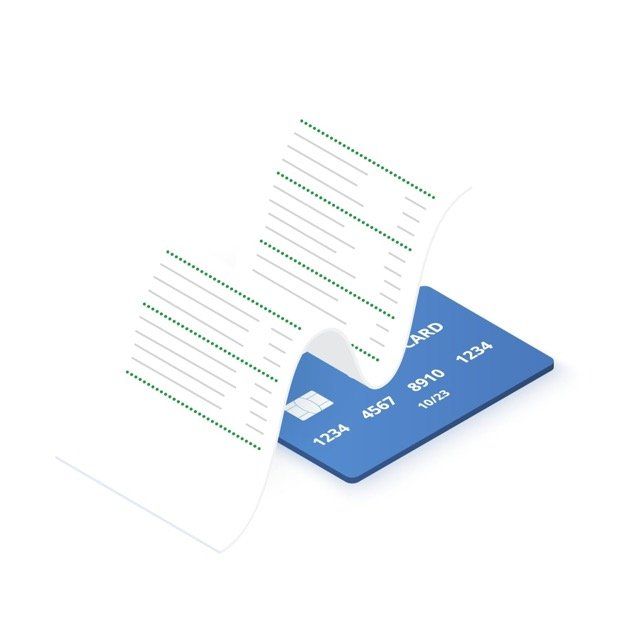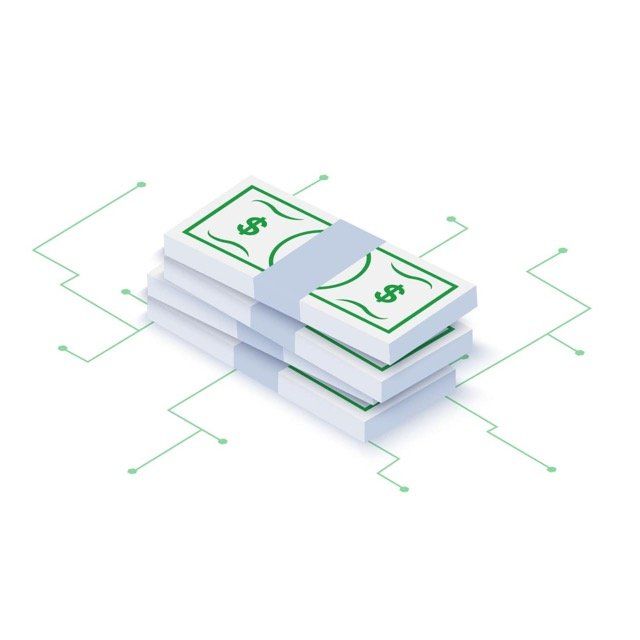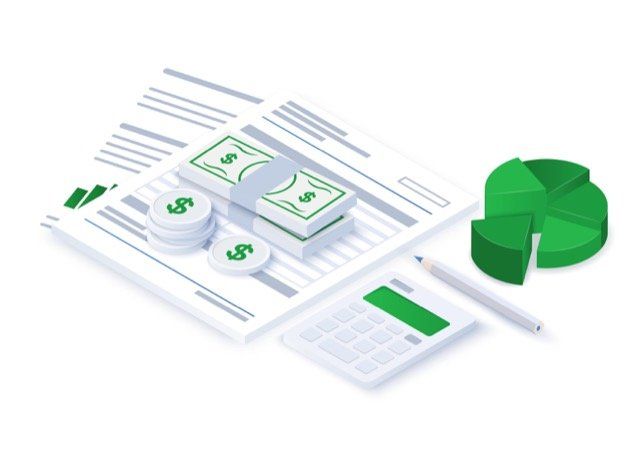Blog

In the ever-evolving landscape of entrepreneurship, small businesses often find themselves navigating a labyrinth of financial challenges. Whether launching a startup or scaling an existing venture, securing adequate financing is crucial for growth and sustainability. However, with a multitude of options available, choosing the right financing strategy can be daunting. In this blog post, we delve into the diverse array of small business financing options, empowering entrepreneurs to make informed decisions tailored to their unique needs. Bootstrapping For many entrepreneurs, bootstrapping is the initial method for financing their ventures. This involves utilizing personal savings, credit cards, or leveraging assets to fund business operations. While bootstrapping offers autonomy and flexibility, it may not be feasible for all entrepreneurs, especially those with limited personal resources. Traditional Bank Loans Traditional bank loans remain a popular choice for small business financing. These loans typically offer competitive interest rates and structured repayment terms. However, securing a bank loan can be challenging, requiring a solid credit history, collateral, and a comprehensive business plan. Additionally, the approval process may be lengthy, delaying access to funds. Small Business Administration (SBA) Loans: SBA loans are government-backed loans designed to support small businesses. These loans offer favorable terms and lower down payments compared to traditional bank loans. SBA loans are ideal for entrepreneurs who may not qualify for conventional financing due to limited collateral or credit history. However, navigating the application process and meeting eligibility criteria can be complex. Venture Capital and Angel Investors For high-growth startups with ambitious goals, venture capital and angel investors provide an injection of capital in exchange for equity ownership. These investors offer not only financial support but also valuable industry expertise and networking opportunities. However, securing venture capital or angel investment often requires a compelling business idea, a scalable business model, and a convincing pitch. Crowdfunding Crowdfunding platforms such as Kickstarter and Indiegogo have revolutionized small business financing by allowing entrepreneurs to raise capital from a large pool of individual backers. Crowdfunding offers a platform for product validation, marketing exposure, and community engagement. However, running a successful crowdfunding campaign requires meticulous planning, compelling storytelling, and active promotion. Alternative Lenders In recent years, alternative lenders have emerged as alternative sources of financing for small businesses. These lenders, including online lenders and peer-to-peer lending platforms, offer quick approval processes and flexible repayment terms. Alternative lending may be suitable for entrepreneurs with less-than-perfect credit or those in need of fast access to funds. Not all alternative lenders are created equal, however. Borrowers should be wary of high-interest rates and hidden fees as they carefully assess the suitability of each lender's offer for their business' long-term health. Grants and Government Programs Various government agencies and private organizations offer grants and funding programs to support small businesses, particularly those in specific industries or underrepresented demographics. These grants provide non-repayable funds, alleviating the financial burden on entrepreneurs. However, securing grants can be highly competitive, requiring thorough research, meticulous grant writing, and adherence to strict eligibility criteria. Navigating the terrain of small business financing requires careful consideration of the myriad options available. Entrepreneurs must assess their unique financial needs, risk tolerance, and growth objectives to determine the most suitable financing strategy. Whether you opt for a traditional bank loan, explore alternative lending sources such as Business Loans Spokane, or seek investment from venture capitalists, informed decision-making is essential for driving your business' success in today's dynamic marketplace.

Securing funding is a crucial step for many businesses looking to grow, expand, or even survive during challenging times. Whether you're a startup entrepreneur or a seasoned business owner, navigating the business loan application process can be intimidating. However, with careful planning and preparation, you can increase your chances of success and secure the financing your business needs to thrive. In this blog post, we'll explore key steps and strategies for navigating the business loan application process effectively. The first step in navigating the business loan application process is to understand your financing needs and options. Take the time to assess your business's financial situation, identify your funding requirements, and determine the type of loan that best fits your needs. Whether you're seeking a short-term loan to cover operational expenses or a long-term loan to finance expansion projects, understanding your financing needs will help you choose the right loan product. Once you've identified your financing needs, it's important to research and compare different loan products. Consider factors such as interest rates, repayment terms, fees, and eligibility criteria when evaluating potential loans. Additionally, explore alternative financing options such as Small Business Administration (SBA) loans, lines of credit, and invoice financing to find the best fit for your business. Before applying for a business loan, take the time to prepare your financial documents and business plan. Most lenders will require detailed financial statements, tax returns, cash flow projections, and a comprehensive business plan as part of the loan application process. Be sure to gather all relevant documents and ensure that they are accurate, up-to-date, and well-organized to streamline the application process and demonstrate your creditworthiness to lenders. As you prepare your loan application, it's essential to review your credit score and address any issues that may negatively impact your creditworthiness. Lenders will evaluate your personal and business credit history when assessing your loan application, so it's important to maintain a good credit score and address any outstanding debts or delinquencies before applying for a loan. Once you've gathered all necessary documents and assessed your creditworthiness, it's time to submit your loan application. Be prepared to provide additional information or documentation as requested by the lender and be proactive in addressing any questions or concerns that may arise during the application process. After submitting your loan application, be patient and proactive in following up with the lender. The loan approval process can take time, and it's not uncommon for lenders to request additional information or documentation before making a final decision. Stay informed and engaged throughout the process, and be prepared to negotiate terms and conditions to ensure that the loan meets your business's needs and objectives. While navigating the business loan application process can seem like a daunting task at first, all it requires is requires careful planning, a little preparation, and perseverance. Remember to be proactive, patient, and diligent throughout the application process, and don't hesitate to seek guidance from financial advisors or industry experts if needed. With the right approach and mindset, you can navigate the business loan application process successfully and take your business to new heights of success. Working with a professional yet personable lender can make the task much simpler as well - once you've done your part to prepare, call us to start the loan application process. We are here to help you every step of the way!

There is a short and a long answer to this question. The short one is that a business loan can last up to 20 or more years. The long one is that everything depends on the type of loan, the amount received, and the lender. For example, if you are considering business loans in Spokane with a larger amount in order to expand your operations but don’t want loan payments to deplete your cash flow, you can opt in for a conventional long-term business loan. On the other hand, short term loans are better for situations like covering expenses, bridging in gaps in your cash flow, taking care of payroll, and similar situations. What are the repayment periods based on? The repayment periods in a loan and the requirements for repayment are generally determined based on the lender – their terms and guidelines, type of institution, loan programs offered, as well as your intended use of funds and your financial profile. How long do you repay a standard bank loan, SBA loan, and term loan? If you are looking at standard business bank loans, the repayment periods usually last from 5 to 7 years on average. For SBA loans, they are longer and can last up to 25 years. Business term loans have average repayment plans of 1 to 5 years. What does a usual repayment structure look like for most business loans? The repayment structure is determined by the lender, along with the full repayment period. In many cases, you can repay a long-term business loan through monthly or bi-monthly installments, where the payments could start in as little as a few weeks after your loan was approved. Short-term loans require weekly or daily repayments over a set period that is usually less than a year, and a total repayment period that is around three months on average. Standard business term loans take longer to repay, which is why the answer to the question above varies based on the type of loan, lender, your use of funds, and your business profile. How is the repayment period determined? As we said above, repayment periods vary from one lender to another, and are different in almost every loan type. It is the lender that determines the length, right after they assess the risk at the borrower. A lender needs to feel confident that the borrower is able to repay the debt on time so they can approve it. From a lender’s perspective, longer repayment periods work, but carry a greater risk. Precisely this is the risk that needs to be calculated, so that a repayment plan is set in place. The bottom line is that the length of the repayment period depends on the financial information provided from the business owner, along with the full financial history and credit score. Afterwards, the lender evaluates that information and creates the repayment plan. How does repayment work in long-term business loans? With long-term business loans, you have a longer repayment period that can last anywhere from one year up until 5, 10, or in some cases, even 25 years. However, this is the most popular type of small business loan and the first choice for owners who seek corporate financing for their small business. The good thing about term loans is that once you are approved, you get the full lump sum deposited to your bank account, and a repayment period that is usually spread throughout monthly or bi-monthly installments and fixed interest rates. What are the term lengths associated with a long-term loan? Different long-term loans have different terms that are commonly set on a variety of factors. The factors here include the loan amount, the purpose of the loan, the policy of the lender, etc. In most cases, long term business loans have terms that last anywhere from 3 to 10 years. As for interest rates, there are no previously set rates with long-term loans. Therefore, interest varies by the lender, borrower (their creditworthiness), and the amount of the loan they applied for.

If you are a small to medium-sized business and want to grow your business, a business loan can help you obtain money for various purposes. Choosing a business loan in Spokane is a good way to get the cash that your business needs to grow. By definition, a business loan is a type of financing provided to companies for different reasons. You can obtain such loans from different types of lenders. Also, there are different types of business loans which include small business term loans, lines of credit, accounts receivable financing, SBA loans, etc. What Is A Small Business Loan? Small business loans are a great way to obtain financing. With a line of credit , you can obtain cash in a similar way as a credit card – you are borrowing up to a certain limit and are required to return that amount plus an interest on it. Similarly, you can get a working capital loan to pay for any investments or assets, or consider a business term loan if you want a one-time lump sum of capital that you will pay back over time. The good thing about term loans is that they typically offer fixed interest rates and regular repayment terms. Where Can You Get Business Loans In Spokane? You can get business loans in Spokane from different lenders. Direct online lenders are among the most popular options for business owners who want a simple way to get a loan by filling an application form online. These lenders use advanced technology and algorithms to determine whether you are suitable for a loan and approve your application in a quicker way than some banks and financial institutions. Aside from online lenders, you can also pursue a loan through large commercial banks, community banks, bank lenders backed by the SBA, as well as peer-to-peer lending websites. All of these entities are authorized to give business loans to prospective businesses. What Are The Basic Requirements For Business Loans? Knowing the basic requirements for business loans is needed before you decide to apply. The minimum requirements include information on your credit score, annual revenue and at least two years in operation. However, this criteria can change depending on the loan type you select. Some lenders including online entities are more flexible, while others look for more information to give you the desired loan. Online lenders are typically the easiest option if you want to get a loan quickly, and their requirements are simple and straightforward. However, you will need certain legal and financial documents to get approved for a loan – for instance, you might be asked for recent bank statements, profit/loss reports, tax returns documents, etc. Do You Need A Business Plan When Applying For Business Loans? For those of you who don’t know, a business plan is a document that outlines the core business activities of the company, along with its objectives and plan to meet its goals. Some lenders ask for this document in order to approve a business loan, and others are more flexible and require other types of information. If you need a business plan for your corporate financing option, ensure that you include your legal business name, full business description, information on your products or services, marketing strategy, employees, along with your financial plan and projections. Do I Need Collateral To Apply For Business Loans? Again, some lenders will require a form of collateral to approve a small business loan. This can be any asset like real estate, equipment, or inventory that the lender finds suitable. Providing collateral gives the lender a form of security if the business struggles and the borrower is unable to make the payments. There are some forms of business loans in Spokane where collateral is a must-have. These include SBA-backed loans, where you must provide something with a personal guarantee (if there are more owners, a statement from each) of at least 20% of the business.

Improving your operations and adapting your business model can help your small business survive the post-pandemic crisis that is occurring. However, finding the cash to do so may be a stretch, which is why business loans are on the rise. The truth is, it is the unique nature of the COVID-19 crises that poses a set of challenges for small businesses as they try to recover. In reality, many businesses still face muted demand, low customer expectations and operational challenges because of the current restrictions and new strains. Making Extreme Changes To Survive One thing we know at this point is that recovery takes time. If we take the 2008 recession as an example, we will see that large companies recovered their contribution to GDP in an average of four years, while smaller ones averaged six years. How long it takes for the current recession is based on both your economic vulnerability to the COVID-19 response and the macroeconomic outlook in your industry. There are plenty of small businesses in the United States that will need to make extreme changes only to survive. By now, the broad theme is familiar with most large businesses: to protect the health and safety of their employees and customers to adapt their business models to invest in talent and technology to adjust their staffing models and labor practices In order to make all of these changes at relative cost and with less working capital, businesses need to invest in the models and technologies to survive. Adopting New Technologies Is Essential For Growth Right now, it seems that the most effective way for small businesses to meet the new expectations is by designing effective contactless experiences. Teams that work remotely have already seen a major difference in adapting and invested in new technologies to facilitate their day-to-day remote work. Restaurants that swapped menus with QR codes are enjoying the same benefits. Among retailers, eCommerce has been a big force – nowadays, Amazon, Etsy, and Instagram make it relatively simple to sell online and expand your audience. However, even with all of these digital options, there is a cost to operating expenses. For example, you need to pay to have photos of your products or invest in new technologies to sell or showcase your services online. The bottom line is that for many small businesses, adopting these new technologies will require significant changes. Additionally, there are other investments that might become necessary. Survival Of The Fittest The survival of small businesses across the economy requires new business models and solutions that only few have the resources to finance. The pandemic has exposed a lot of weaknesses that businesses have built over time, and the next normal could impose additional burdens. Adapting to such challenges will require that small and medium sized businesses invest in new technologies, discover new operating models, and adapt their workforce. However, that is not easy and requires an economy-wide effort to provide additional financing, restore the demand, and improve their capability and resilience. While getting back to the pre-pandemic standard will take some time, businesses need to embrace financing and show their optimism for the future. The good thing is that being present during this change can only allow businesses to strengthen the levels of consumer confidence and spending patterns in their audience.



